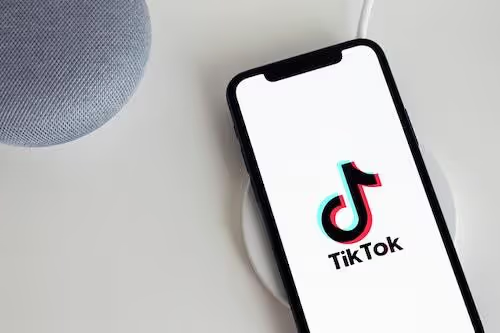Introduction to Social Listening
Social media is more than a platform for casual conversations; it's a dynamic space where billions express their preferences, discuss brands, identify trends, and observe competitors. Within this vast dialogue lies invaluable insights for businesses, though the sheer volume can be overwhelming.
Social listening empowers brands to decode these conversations. Instead of merely broadcasting messages, it emphasizes understanding what people are already saying about your brand, competitors, and industry.
This approach revolutionizes how businesses leverage social media. It's no longer just a promotional tool; savvy companies recognize it as a treasure trove of consumer insights that can enhance every aspect of their operations—from product development to customer service, content creation, and crisis management.
As we progress through 2025, social listening becomes increasingly crucial. Technological advancements now allow us to capture and analyze social chatter with unprecedented precision.
In this guide, we'll explore how social listening can be your key to social media success. We'll delve into strategies, tools, and real-life examples to help you transform social data into actionable business insights.
What is Social Listening?
Social listening involves tracking, analyzing, and responding to conversations about your brand, industry, and competitors on social media and the web. It helps you understand the context, sentiment, and trends within these discussions.
Defining Social Listening
Social listening gathers data from social media, forums, blogs, and review sites where people express their opinions. This data is analyzed to gain insights into consumer thoughts, needs, and behaviors. Unlike traditional market research, social listening captures genuine and unsolicited opinions in real-time.
Connor Skelly of Brightfield Group states, "Social listening can be a very effective tool," offering businesses a glimpse into consumers' minds without the biases of focus groups or surveys.
Social Listening vs. Social Monitoring
Though often confused, social listening and social monitoring serve distinct purposes:
- Social Monitoring: Tracks metrics like mentions and comments. It's reactive and focuses on "what" is happening.
- Social Listening: Explores the "why" behind the metrics. It examines sentiment, context, and patterns to understand consumer behavior and opinions.
The Evolution of Social Listening
Social listening has evolved significantly since its inception. Initially used for tracking brand mentions and campaigns, it has become a vital market research tool. With AI and language processing, today's tools can detect language nuances, identify trends, and offer insights across platforms and languages.
Read more:
Best Practices for Ethical Social Media Screening
Social Media Screening vs. Traditional Background Checks
How to Choose the Right Online Vetting Software
The Strategic Value of Social Listening
Social listening extends beyond tracking mentions. It provides a comprehensive view of your brand's market position, enabling informed decision-making.
Brand Intelligence
Social listening reveals current perceptions of your brand. By analyzing conversations, you can identify strengths to leverage and weaknesses to address. For instance, tracking sentiment about product features can guide improvements that matter most to customers.
A 2023 study found that brands using social listening for product development experienced 37% higher customer satisfaction compared to those relying solely on traditional research methods.
Competitive Analysis
Understanding your competitors' social presence is crucial for strategic planning. Social listening allows you to:
- Compare your share of voice across platforms
- Identify gaps in competitors' offerings
- Analyze sentiment around competitor products
- Discover unmet customer needs
This knowledge helps you differentiate and seize market opportunities that competitors overlook.
Industry Insights
Social listening also captures broader industry conversations. This enables you to:
- Spot trends before they become mainstream
- Understand shifting consumer preferences
- Monitor regulatory changes and public reactions
- Identify potential market disruptions
Customer Sentiment Analysis
Understanding the emotions behind consumer conversations is invaluable. Sentiment analysis categorizes discussions as positive, negative, or neutral, providing context that numbers alone can't. This emotional insight helps brands craft messages that resonate more effectively with their audience.
Social Listening Metrics That Matter
When utilizing social listening, focus on the right metrics to extract valuable insights from the vast amount of social data.
Share of Voice
Share of Voice (SOV) measures the portion of industry conversations about your brand compared to others. This metric helps you gauge brand visibility and market standing.
Key Insight: A rising SOV often correlates with increasing market share, making it a valuable metric for trend prediction.
Sentiment Analysis
Sentiment analysis examines the emotional tone in social mentions, typically categorizing them as positive, negative, or neutral. Modern tools can detect nuances like sarcasm or frustration.
Measurement Scale: Many platforms use a 1-100 scale, with higher numbers indicating more positive sentiment.
Growth Rate and Trend Identification
By tracking changes in conversation volume over time, you can identify emerging trends and gauge interest in topics or products.
Application: Brands can recognize rising topics early and create content that taps into growing interest.
Engagement Metrics
Look beyond quantity to measure the quality of interactions for deeper insights:
- Amplification Rate: Frequency of content sharing
- Conversation Rate: Comments and replies generated
- Applause Rate: Positive reactions like likes or favorites
These metrics together provide a comprehensive view of your social media performance and audience engagement, enabling strategic adjustments to enhance impact.
Transforming Insights into Action
Social listening data becomes valuable when insights are translated into actions. This is how many brands distinguish themselves from competitors.
Content Strategy Development
Social listening reveals what content resonates with your audience. By analyzing engagement, you can:
- Identify topics that elicit positive responses
- Determine which content formats work best (video, images, text)
- Choose optimal posting times based on engagement
Product Innovation
Customer conversations often contain product feedback that can inspire new ideas:
- Identify issues with current products
- Discover features customers desire
- Recognize market gaps overlooked by competitors
Customer Service Enhancement
Social listening enhances customer experience by:
- Identifying common issues early
- Developing solutions for recurring problems
- Creating FAQs from frequently asked questions
Crisis Management
When negative sentiment rises, social listening provides early warnings:
- Detect issues before they escalate
- Monitor sentiment during crises
- Evaluate the effectiveness of crisis responses
Success hinges on connecting insights to relevant teams. When product feedback reaches development or content ideas reach marketing, your organization can respond effectively to customer needs.
Real-World Success Stories
These case studies demonstrate how brands leverage social insights to achieve tangible results.
Case Study: Product Development Through Social Listening
L'Oréal exemplifies how social listening can drive product innovation. They noticed discussions about ombré hair coloring and the challenges of DIY attempts. In response, L'Oréal developed the Préférence Wild Ombré product to meet this need. They launched it with tutorials addressing common concerns identified through social listening. This strategy resulted in one of their top launches that year, with sales exceeding expectations by 30%.
Case Study: Reputation Management
A major airline faced backlash after a customer service incident went viral. Their social listening tools quickly detected the negative buzz. Instead of a generic response, they analyzed customer language to understand concerns. The crisis team crafted messages addressing these issues, demonstrating they were listening. They implemented policy changes based on customer feedback and communicated these openly. In two weeks, their sentiment score improved by 65%, converting many critics into supporters through genuine feedback responses.
The Future of Social Listening
Social listening is rapidly evolving. Emerging technologies are reshaping how brands gather and interpret social data. Understanding these trends positions you to stay ahead in your social media strategies.
AI and Machine Learning Integration
AI and machine learning are revolutionizing social listening. They can analyze millions of conversations in real-time and identify patterns that humans might overlook. Modern AI can grasp context, detect sarcasm, and recognize cultural nuances in posts. This leads to more accurate sentiment analysis and deeper insights into consumer behavior. By 2025, AI-powered tools will likely become standard, predicting trends before they fully emerge.
Predictive Analytics
Predictive analytics represents the next frontier in social listening. Instead of merely reporting past events, advanced systems now forecast future ones. These tools use historical data to predict consumer behavior, potential PR issues, and new market opportunities. Brands utilizing predictive social listening can plan campaigns, products, and responses before competitors spot the trend, gaining a significant edge in fast-paced markets.
Cross-Platform Integration
As users disperse across more platforms, effective listening requires cross-platform integration. Modern solutions track conversations across social networks, messaging apps, forums, review sites, and even the metaverse. This comprehensive view provides a holistic understanding of consumer sentiment and behavior, ensuring brands capture important conversations in emerging digital spaces.
Phyllo's Social Listening Solutions
In today's landscape, brands need reliable tools to navigate social media effectively. Phyllo offers solutions that empower businesses to harness social data efficiently.
Social Listening API
Phyllo's Social Listening API provides real-time access to social media data from various platforms. Businesses can integrate these capabilities into their existing systems. The API collects data and offers filtering options, delivering clear insights for decision-making. Developers find it easy to implement, with comprehensive documentation to guide them.
Social Screening
Phyllo's Social Screening tool enables businesses to accurately assess social profiles. It reviews past content to identify risks and opportunities, ensuring partnerships align with brand values. This automated process saves time and delivers thorough results.
Influencer Vetting for Brand Safety
Selecting the right influencers is crucial for brand safety. Phyllo's Influencer Vetting solution conducts detailed checks on potential partners. It evaluates past content, engagement authenticity, and audience fit, reducing risk while identifying suitable brand ambassadors.
Measurement APIs
To enhance your influencer marketing strategies, consider Phyllo's Measurement APIs, which provide advanced solutions for tracking ROI and campaign effectiveness.
Financial Services for Creators
For creators looking to manage their income data effectively, Phyllo offers Financial Services that provide insights into verified income streams across platforms.
Engagement API
Utilize Phyllo's Engagement API to analyze social media engagement metrics and gain deeper insights into audience interactions.
Creator Tools
Explore Phyllo's Creator Tools designed to empower creators with the resources they need to succeed in the digital landscape.
Customer Showcases
For inspiration on how to leverage Phyllo's technology, check out our Customer Showcases that highlight successful applications of our APIs across various industries.
Frequently Asked Questions:
What is social listening and how does it differ from social monitoring?
Social listening involves analyzing conversations and trends on social media to gain insights into consumer opinions and industry trends. Social monitoring tracks metrics like mentions and engagement. Social listening delves deeper to understand the emotions and context behind these interactions.
How can social listening benefit my business?
Social listening helps you understand customer needs, track brand perception, identify trends, improve products, enhance customer service, and develop better marketing strategies based on real feedback.
What platforms should I include in my social listening strategy?
Focus on platforms where your audience is active. This typically includes major networks like Twitter, Facebook, Instagram, LinkedIn, and Reddit. It may also encompass industry forums, blogs, and review sites, depending on your audience.
How often should I review social listening data?
Review social listening data regularly, daily for urgent issues and weekly for broader trends. Set up real-time alerts for significant mentions that require immediate attention.
Can social listening help during a PR crisis?
Yes, social listening is essential during crises. It allows you to monitor the situation in real-time, understand public sentiment, identify the source and spread of issues, and assess the effectiveness of your response.
How do I measure the ROI of social listening?
Track metrics like improved customer satisfaction, faster response times, increased positive sentiment, product enhancements from feedback, crisis prevention, and enhanced marketing campaign performance derived from social listening insights.













.avif)

.avif)

